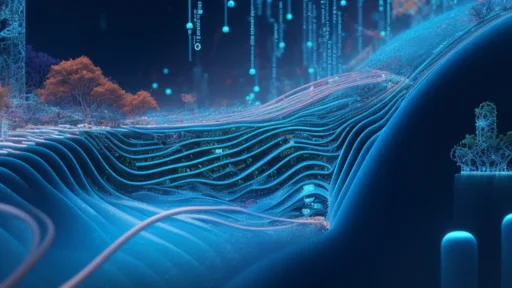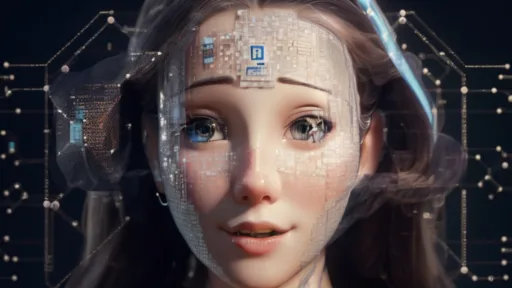The fields of machine learning( ML), natural language processing( NLP), deep learning( DL), and generative AI( GAI) represent significant strides in artificial intelligence. Each has distinct characteristics, operations, and exploration challenges. This blog offers a relative analysis of these disciplines, emphasizing their unique benefactions and interconnections, along with some code examples for better understanding.
Machine Learning( ML)
Overview
Machine learning is a subset of artificial intelligence that focuses on developing algorithms that enable computers to learn from and make prognostications grounded on data. It encompasses colorful ways, including supervised, unsupervised, and underpinning learning.
Key Characteristics
Supervised Learning Uses labeled data to train models for bracket and retrogression tasks.
Unsupervised Learning Identifies patterns and structures in unlabeled data, similar as clustering and dimensionality reduction.
underpinning Learning Involves learning optimal conduct through trial and error to maximize prices.
operations
Prophetic analytics
Fraud discovery
Image and speech recognition
Recommender systems
Example Code Supervised Learning with Scikit- Learn
fromsklearn.datasets importload_iris
fromsklearn.model_selection importtrain_test_split
fromsklearn.ensemble import RandomForestClassifier
fromsklearn.metrics importaccuracy_score
Load dataset
iris = load_iris()
X, y = iris.data,iris.target
Split into training and test sets
,X_test,y_train,y_test = train_test_split( X, y,test_size = 0.2,random_state = 42)
Train a Random Forest classifier
clf = RandomForestClassifier(n_estimators = 100,random_state = 42)
clf.fit(X_train,y_train)
Make predictions and evaluate
= clf.predict(X_test)
print(f’Accuracy{accuracy_score(y_test,y_pred).2 f}’)
Natural Language Processing( NLP)
Overview
Natural language processing is a field at the intersection of computer wisdom, artificial intelligence, and linguistics. It focuses on enabling machines to understand, interpret, and generate human language.
Key Characteristics
Text Analysis Techniques for processing and analyzing textual data, including tokenization, stemming, and lemmatization.
Syntax and Semantics Understanding the structure( syntax) and meaning( semantics) of language.
Machine Translation Automatically rephrasing textbook from one language to another.
Sentiment Analysis Determining the sentiment expressed in textbook, similar as positive, negative, or neutral.
operations
Chatbots and virtual assistants
Sentiment analysis
Machine translation
Information reclamation
Example Code Sentiment Analysis with NLTK
import nltk
fromnltk.sentiment.vader import SentimentIntensityAnalyzer
Download the VADER wordbook
(‘vader_lexicon’)
Initialize the VADER sentiment analyzer
sid = SentimentIntensityAnalyzer()
Analyze sentiment
textbook = ” I love this product! It’s absolutely fantastic.”
sentiment = sid.polarity_scores( textbook)
print( sentiment)
Deep Learning( DL)
Overview
Deep learning, a subset of machine learning, employs neural networks with numerous layers( hence” deep”) to model complex patterns in data. It has revolutionized fields requiring high- dimensional data analysis.
crucial Characteristics
Neural Networks Composed of layers of neurons that learn hierarchical representations of data.
Convolutional Neural Networks( CNNs) Specialized for image and videotape processing.
intermittent Neural Networks( RNNs) Effective for successional data, similar as time series and natural language.
Mills Advanced infrastructures particularly useful in NLP.
operations
Image and speech recognition
Natural language processing
Autonomous vehicles
Medical diagnosis
Example law Image Classification with TensorFlow
import tensorflow as tf
fromtensorflow.keras.datasets import mnist
fromtensorflow.keras.models import successional
fromtensorflow.keras.layers import thick, Flatten, Conv2D, MaxPooling2D
Load and preprocess the MNIST dataset
X_train,y_train),(X_test,y_test) = mnist.load_data()
,X_test = X_train/255.0,X_test/255.0
= X_train. reshape(- 1, 28, 28, 1)
X_test = X_test. reshape(- 1, 28, 28, 1)
Build a simple CNN model
model = successional((
Conv2D( 32,kernel_size = ( 3, 3), activation = ‘ relu’,input_shape = ( 28, 28, 1)),
MaxPooling2D(pool_size = ( 2, 2)),
Flatten(),
Dense( 128, activation = ‘ relu’),
Dense( 10, activation = ‘ softmax’)
))
Compile and train the model
( optimizer = ‘ adam’, loss = ‘sparse_categorical_crossentropy’, criteria =( ‘ delicacy’))
model.fit(X_train,y_train, ages = 5,validation_data = (X_test,y_test))
estimate the model
loss, delicacy = model.evaluate(X_test,y_test)
print(f’Accuracy{ delicacy.2 f}’)
Generative AI( GAI)
Overview
Generative AI focuses on creating models that can induce new, preliminarily unseen data. This includes textbook, images, music, and more. Notable exemplifications include GPT- 3 for textbook generation and GANs( Generative inimical Networks) for image conflation.
crucial Characteristics
Generative Models Capable of producing new data samples that act the training data.
Mills Especially in NLP, these models induce coherent and contextually applicable textbook.
GANs correspond of a creator and a discriminator network that contend to ameliorate the quality of generated samples.
operations
Text generation and completion
Image and videotape conflation
Style transfer
medicine discovery
illustration law Text Generation with OpenAI GPT- 3
import openai
Replace’ your- api- key’ with your factual OpenAI API key
= ‘ your- api- key’
defgenerate_text( prompt)
response = openai.Completion.create(
machine = ” textbook- davinci- 003″,
prompt = prompt,
max_tokens = 100,
n = 1,
stop = None,
temperature = 0.7,
)
communication = response.choices( 0).text.strip()
return communication
illustration prompt
prompt = ” Once upon a time in a land far, far down”
print(generate_text( advisement))
relative Analysis
Integration and Overlap
NLP and ML NLP heavily relies on ML algorithms for tasks similar as bracket, clustering, and retrogression. Deep learning models like RNNs and mills have farther advanced NLP capabilities.
DL and ML Deep literacy is a subset of ML, distinguished by its use of neural networks with numerous layers. While traditional ML styles frequently bear point engineering, DL models can automatically learn features from raw data.
GAI and DL Generative AI builds on DL ways. GANs and mills are high exemplifications of deep learning infrastructures that enable generative capabilities.
Ethical and Practical Considerations
Bias and Fairness All these fields must address issues of bias and fairness, icing that models don’t immortalize or complicate societal impulses.
translucency and Interpretability Enhancing the translucency and interpretability of models is pivotal across all disciplines to make trust and enable effective mortal- AI collaboration.
Data sequestration guarding stoner data and icing sequestration is a common challenge, especially in NLP and GAI, where models frequently reuse sensitive information.
Future Directions
mongrel Models Combining the strengths of different AI ways to produce further robust and protean systems.
Sustainable AI Developing energy-effective models and algorithms to reduce the environmental impact of AI exploration and deployment.
Ethical AI Ongoing exploration into fabrics and guidelines for the ethical use of AI technologies, ensuring they profit society as a whole.
Conclusion
Machine learning, natural language processing, deep learning, and generative AI each contribute uniquely to the AI geography. Their interplay and advancements are driving progress in creating intelligent, responsive, and responsible systems. As exploration continues to address the challenges and harness the eventuality of these technologies, the future of AI pledges to be both instigative and transformative.





